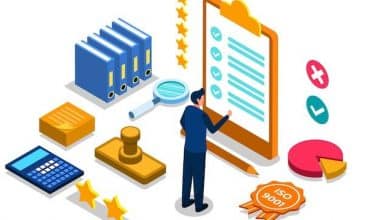Have you ever asked a prospective employer which sales metrics they value the most during an interview? That response is most likely “Yes.” What if I asked you if you’d ever questioned a potential employer about their sales velocity? If you responded “Yes” again, you already understand how critical this equation is for understanding a sales organization’s growth attitude and overall health. If you’ve never given any regard to a company’s sales velocity, take a moment to brush up on this key equation and go beyond KPIs the next time you meet. In this article, we will discuss sales velocity, its four (4) variables, its formula, how to calculate, and how to increase sales velocity.
What is Sales Velocity?
The rate at which deals move through your pipeline and create revenue is referred to as sales velocity. A sales velocity equation determines an organization’s sales velocity and how much money it can expect to create over a certain period by using four parameters (number of opportunities, average deal value, win rate, and length of sales cycle).
The outcomes of the sales velocity equation indicate the overall efficacy of the sales team, as well as where the team may boost sales productivity to positively influence revenue targets.
Now that we’ve defined sales velocity, let’s look at why it’s important, how to calculate it, increase it, and the variables that influence it.
Why is it Important to Track Sales Velocity?
Even if your firm is rapidly expanding, you may be wasting time or losing prospects due to a lack of understanding of your sales funnel. When you track sales velocity, you get a complete picture of your client experience as well as an insight into what works and what causes prospects to stall. Sales velocity can also be used to track how much inventory you have and when you might need more.
The Four (4) Variables of Sales Velocity
The four (4) variables that define sales velocity are all metrics that your CRM should be measuring now, and they are as follows:
- Number of Opportunities
- Average Deal Value
- Win/Conversion Rate
- Length of Sales Cycle
Let’s go through each of these four (4) variables of sales velocity and how you can use them to guide your organization’s planning and goal setting.
#1. Number of Opportunities
Number of opportunities is one of the four (4) variables of sales velocity. There are always a certain number of opportunities in your pipeline. Ascertain that they are qualified for opportunities. Your bottom line will suffer if your pipeline is clogged with faulty leads and only a handful has a chance of closing.
#2. Win/Conversion Rate
Your average win rate is proportional to the number of quality leads you generate. Divide the number of sales won by the total number of sales opportunities to determine your win rate.
#3. Deal Value (average deal size)
Every transaction necessitates the most important resource of both parties: time. Make sure you’re making the most of this resource for both your prospect and yourself by presenting offers or add-ons that will make your prospect’s life easier while raising your average deal value and sales velocity.
#4. Length of Sales Cycle (measured in months)
Length of the sales cycle is also one of the four (4) variables of the sales velocity factor that you should not enhance. Making your sales process more efficient, revising your sales playbook, and occasionally increasing personnel to your sales force are all strategies to shorten your average sales cycle and close more quality deals faster.
Pipeline Velocity vs. Sales Velocity
Sales velocity can also be referred to as pipeline velocity or sales funnel velocity. These words all refer to the same thing: they all measure how rapidly prospects move through the sales pipeline or sales funnel.
It is up to you and your firm to decide what to title this metric. Some prefer pipeline velocity to sales velocity since it is more direct (your prospects are literally moving through your pipeline), but at the end of the day, the number produced by the formula is what matters, not the label.
Sales Velocity Formula
Sales velocity is straightforward to determine if you understand the components and have a well-defined process. To determine your sales velocity, examine your pipeline, sales cycle, lead nurturing methods, and average deal size.
The following information is required by the sales velocity formula:
- The number of opportunities in your pipeline
- The monetary worth of your typical deal size
- Customer conversion rate is expressed as a percentage of wins vs losses.
- The average number of days in a sales cycle
The sales velocity formula is:
Sales velocity (V) = [Number of opportunities (#) x Deal value ($) x Win rate (%)] ➗ Sales cycle length (L)
V = [# X $ X %] ➗ L
Examine each of these components to determine which numbers to enter into your equation:
#1. Number of opportunities
This metric represents the number of qualified leads in your pipeline. Qualifying your leads will maintain this number healthy while also saving you time and resources. Low-quality leads will not advance in the pipeline, and they will eventually reduce your sales velocity.
#2. Deal value ($)
This is another term for the average size (or value) of the deal your prospect purchases. If you sell products at fixed prices, you might wish to pay attention to particular product sales velocities. However, if you sell bundles or products on a sliding scale, the average purchase amount is better.
#3. Win rate (%)
Before you can enter your win rate into the sales velocity formula, you must first calculate it. Divide the total number of sales won by the total number of opportunities (#) to calculate your win rate. As you qualify your leads, your win rate improves, just like your opportunity count. Because qualified leads are more likely to purchase, the number of sales earned should rise.
#4. Sales cycle length (L)
In an ideal scenario, you want your sales cycle to be as short as feasible. The faster a deal is completed, the faster a sales representative can move on to the next prospect.
Of course, you don’t want to spend hours each time you need to compute your sales velocity. A CRM or other lead management or lead tracking software is the easiest way to keep your sales velocity metrics organized.
How To Calculate Sales Velocity
To determine sales velocity, keep track of the four variables mentioned above and plug them into a simple calculation. To determine sales velocity, multiply the total number of chances, average deal value, and win rate by the length of your average sales cycle. Although it varies by industry, location, and firm, account managers are paid more than customer success managers simply because they are in sales and there are incentives for success.
Segmenting your sales pipeline by market size (or other significant distinctions between groups of customers, such as industry or territory) can guarantee that your variables are appropriately computed. Because of budget differences and product requirements, your enterprise-level customers will most likely have a substantially greater average deal size than SMBs.
Let’s take a simple example: suppose your business had 100 prospects in the first quarter of your new fiscal year, with an average deal size of $10,000, a win rate of 30%, and a sales cycle of 50 days on average for mid-market agreements. We can compute your sales velocity to be $6,000 using easy math, which is roughly how much revenue your sales staff generates per day among mid-market deals.
Let’s imagine you go back and calculate the past sales velocity quarter over quarter from the previous fiscal year, and you discover you rose by 15% QoQ on average without any intervention. So you want to boost your sales velocity by 25%, from $6,000 in the first quarter to $7,500 in the second.
How to Increase Sales Velocity
There’s nothing wrong with attempting to sell more quickly or make more revenue, but it must be done with a clear strategy in mind.
The formula includes the most typical strategies to boost your sales velocity metrics: opportunities, deal size, win rate, and sales cycle length.
Let’s take a look at each one and how you may improve it strategically:
#1. Increase your number of opportunities.
It is critical to understand that opportunities are not the same as leads. Leads are customers who have shown an interest in your company or product by clicking on an ad or signing up for a newsletter. Prospects are qualified leads. That indicates a sales representative has evaluated the lead and determined that they are likely to become a customer based on certain criteria. You don’t need an unending supply of leads to boost your sales; you just need additional opportunities. Make your salespeople spend more time qualifying leads rather than producing them. Quality is more important than quantity.
#2. Boost your average deal size.
This one can be hard because you don’t want to just raise your product’s price. Pricing and packaging are all about balancing cost and benefit. You’ll have an easier time convincing them to buy a greater offer if you can better identify their pain points and figure out the appropriate bundle for them. You may also raise the average transaction size by examining which opportunities are likely to purchase larger or smaller offers. Push smaller opportunities through the pipeline faster so you can devote more attention to larger sales. Just don’t compromise the smaller deals in the process—all sales, regardless of size, add to the ultimate total.
#3. Focus on conversion points to improve your win rate.
Prospects may leave your pipeline for a variety of reasons, but each time they do, your sales professionals lose the time they spent nurturing prospective buyers. To improve your win rate, you must first understand why customers aren’t buying. Determine where and why prospects are dropping out of the sales cycle. Is it a cost? Is it required? When you understand why your prospects are departing, you can better address the issues.
#4. Reduce your sales cycle.
One of the simplest methods to boost sales is to reduce the time it takes to make them. To be clear, this does not imply aggressively pushing sales. You must still take the time to create a relationship and not put a prospect in an awkward situation. Having said that, you can reach out sooner and be more prepared. If a prospect asks a question, you should be able to address it right away. Always keep corporate materials on hand and ready to go; make them available to prospects who are nearing the finish line as well. You don’t need to speed up your interactions; simply shorten the time between them.
How Discounts Affect Sales Velocity
Discounts aren’t always the answer to raising revenue, but by offering incentives to close faster, you might potentially shorten your sales cycle – and thereby increase your sales velocity.
Ensure that your sales representatives are well-trained on how to use discounts to benefit deals rather than slowing your company’s growth and acting as a crutch for struggling sales teams.
What is an Example of Sales Velocity?
Sales velocity gauges how rapidly your company earns money. It indicates how much revenue a sales team earns on a daily basis. An individual sales rep may produce $2,000 in daily income for a company, whereas an entire team may generate $50,000.
What is the Unit of Sales Velocity?
To determine sales velocity, multiply the total number of chances, average deal value, and win rate by the length of your average sales cycle. The equation’s output is your company’s sales velocity, which is expressed in dollars.
What is Sales Velocity in eCommerce?
The rate at which a prospective customer passes through a company’s sales pipeline and generates money is referred to as sales velocity. It represents a sales team’s health and productivity, but it also identifies areas where the sales process could be improved.
How do you Measure Velocity?
Velocity (v) is a vector quantity that represents displacement (or change in position, s) over time (t) via the equation v = s/t. Speed (or rate, r) is a scalar quantity that represents the distance traveled (d) divided by the change in time (t) by the equation r = d/t.
How do you Increase Sales Velocity?
There are four techniques to increase your sales velocity:
- Increase the number of possible sales.
- Increase your average deal size.
- Improve your personal win rate.
- Reduce the duration of your sales cycle.
Is Velocity a Quantity or Unit?
Velocity is a vector quantity that quantifies an object’s speed in a specified direction – both of which are required to define a velocity. Meters per second is the SI unit of velocity.
What is Velocity and its Unit and Formula?
Velocity (v) is a vector quantity that represents displacement (or change in position, s) over time (t) via the equation v = s/t.
Conclusion
A good pipeline or a larger sales team are insufficient to keep an organization expanding – in fact, they can have the opposite impact. Measure your sales velocity, understand what the findings indicate, and have concrete strategies in place to fast enhance it.
- What is Sales Forecasting? Methods and Real-world Examples
- SALES PROSPECTING: Definition, Method & Template
- Saas Sales: Ultimate Guide to The Saas Sales Process and Metrics
- MARKETING SEGMENTATION: Definition, Examples, Strategy, Variables & Importance
- SALES PIPELINE: Meaning, Stages, Software Difference
- IT HELPDESK: Definition, Duties, Salary, Outsourcing & Guide
References






